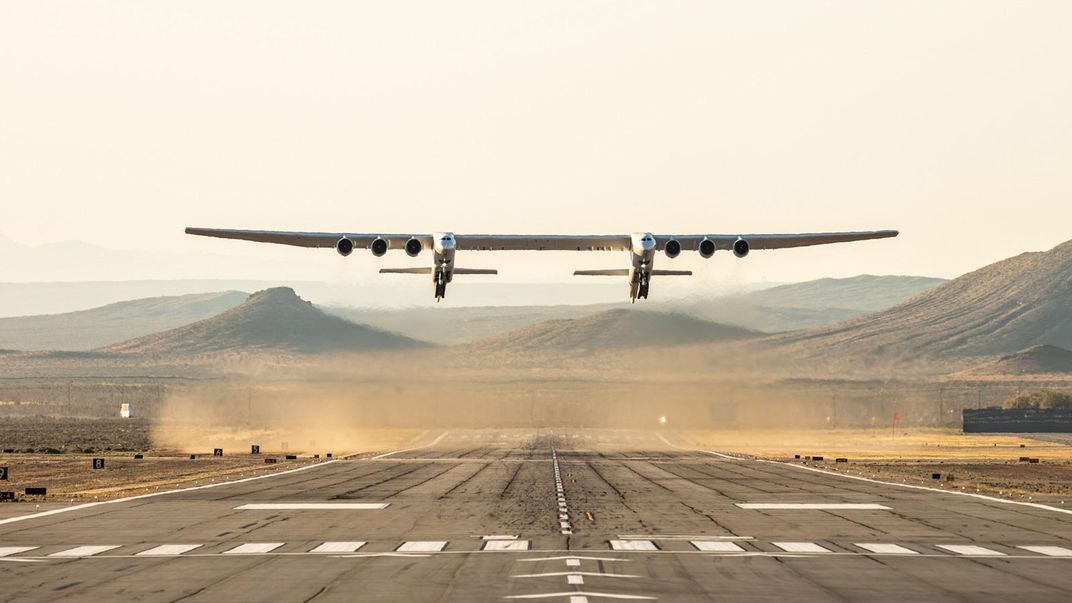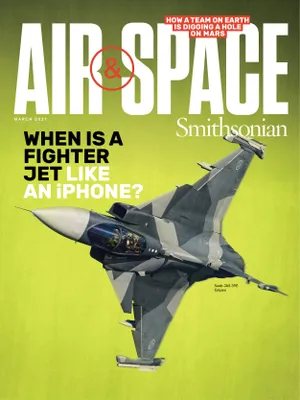This Could Be the Future of Hypersonic Flight
Stratolaunch previews the Talon-A research vehicle
:focal(845x731:846x732)/https://tf-cmsv2-smithsonianmag-media.s3.amazonaws.com/filer/af/f2/aff2f0d0-f6fa-4aa3-801a-22a7788e0fdd/32j_fm2021_stratolaunchtalonaconceptflight04_live.jpg)
Stratolaunch offered a glimpse of the future when, in October, it posted a photo of the prototype upper composite skin of its Talon-A hypersonic research vehicle on Twitter. When completed, it will test hypersonic payloads at speeds up to Mach 6. While Talon-A can take off horizontally, it will primarily be launched by Stratolaunch’s enormous jet carrier aircraft. Originally designed to launch satellites, the company pivoted to providing a test-bed for hypersonic vehicles following the death of founder Paul Allen in 2018 and its acquisition by new investors.

Company spokesperson Art Pettigrue says the carrier offers unique advantages: “We are able to provide a wide hypersonic flight envelope for our customers, with a range of Mach numbers and dynamic pressures, because we are not constrained to a rocket first stage that has a limited flight path due to various location, loading, and environmental constraints.” Stratolaunch expects Talon-A’s first test flight will be in 2022, subject to possible delays due to the COVID-19 pandemic.
/https://tf-cmsv2-smithsonianmag-media.s3.amazonaws.com/accounts/headshot/mark-strauss-240.jpg)

/https://tf-cmsv2-smithsonianmag-media.s3.amazonaws.com/accounts/headshot/mark-strauss-240.jpg)